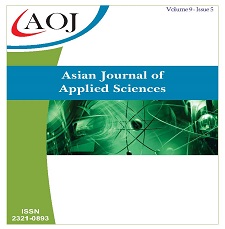The Development of Storytelling Guide Model for Teachers at Early Childhood Education
DOI:
https://doi.org/10.24203/ajas.v9i5.6731Keywords:
Guide, Storytelling, Early Childhood Education TeachersAbstract
All Early Childhood Education teachers realize that storytelling is one of the character-building methods for early childhood. It is rarely applied because storytelling is difficult; they cannot act and imitate voices or sounds. Although there are capable teachers, they are still amateur. Therefore, teachers need a storytelling guide that is valid, practical, and effective. In this study, teachers who were respondents came from four Early Childhood Education units in Palu City, Province of Central Sulawesi. Data was obtained through literature and field studies by collecting theories from relevant research through observation, interviews, and questionnaires. Data collection was carried out in a natural condition and analyzed qualitatively in the form of descriptive data. The results of the study stated that was valid, practical, and effectively used by teachers, that was an increase in knowledge, attitudes, and skills in storytelling after using the guide of the development model.
References
Priyanto A. PENGEMBANGAN KREATIVITAS PADA ANAK USIA DINI MELALUI AKTIVITAS BERMAIN. Jurnal Ilmiah Guru Caraka Olah Pikir Edukatif [Internet]. 2014 [cited 2021 Jun 4];0(2). Available from: https://journal.uny.ac.id/index.php/cope/article/view/2913
Hafida N, Jadid UN. PEMBENTUKAN KARAKTER PEDULI DAN BERBUDAYA LINGKUNGAN BAGI PESERTA DIDIK DI MADRASAH MELALUI PROGRAM ADIWIYATA. 2018;8:22.
Polina L, Pramudiani P. Pembelajaran Karakter Melalui Media Dongeng pada PAUD Formal Binaan I dan Binaan III Ciracas Jakarta Timur. Jurnal Solma. 2018;7(2):215–24.
juwita W. Urgensi Bermain Sebagai Stimulasi Perkembangan Otak dan Solusi Mengatasi Kekerasan (Child Abuse) dalam Pertumbuhan dan Perkembangan Anak. QAWWAM. 2018 Jun 1;12(1):40–60.
Habsari Z. DONGENG SEBAGAI PEMBENTUK KARAKTER ANAK. BIBLIOTIKA : Jurnal Kajian Perpustakaan dan Informasi. 2017 Apr 5;1(1):21–9.
Harahap R. Pengembangan Imajinasi Anak Melalui Dongeng. In: Prosiding Seminar Nasional Pendidikan Bahasa dan Sastra Indonesia [Internet]. Medan: Unimed; 2018 [cited 2021 Jun 4]. p. 49–55. Available from: http://digilib.unimed.ac.id/38757/1/6.%20Fulltext.pdf
Aziz F, Nurjanah F, Sari DP. AKTUALISASI TTB (TEORI TAKSONOMI BLOOM) MELALUI DRAMA KEPAHLAWANAN GUNA PENANAMAN PENDIDIKAN KARAKTER PADA PESERTA DIDIK. In: FKIP e-PROCEEDING [Internet]. Jember: Program Studi Pendidikan Bahasa dan Sastra indonesia FKIP; 2017 [cited 2021 Jun 4]. p. 715–24. Available from: https://jurnal.unej.ac.id/index.php/fkip-epro/article/view/4950
Fitroh SF, Sari EDN. DONGENG SEBAGAI MEDIA PENANAMAN KARAKTER PADA ANAK USIA DINI. Jurnal PG-PAUD Trunojoyo : Jurnal Pendidikan dan Pembelajaran Anak Usia Dini. 2015 Oct 28;2(2):95–105.
Yuhelmi Y. PENDIDIKAN KARAKTER ANAK USIA DINI MELALUI STRATEGI MENDONGENG CERITA BUDAYA DAERAH MINANGKABAU. Pedagogi: Jurnal Ilmu Pendidikan. 2014 Nov 1;14(2):55–61.
Lusiana D, Lestari W. INSTRUMEN PENILAIAN AFEKTIF PENDIDIKAN KARAKTER BANGSA MATA PELAJARAN PKN SMK. Journal of Research and Educational Research Evaluation [Internet]. 2013 [cited 2021 Jun 4];2(1). Available from: https://journal.unnes.ac.id/sju/index.php/jere/article/view/1330
Fitriyyah D. PENDIDIKAN KARAKTER MELALUI KEGIATAN MENDONGENG DI TK ABA KARANGDUWUR DAN TK MASYITHOH PETANAHAN KABUPATEN KEBUMEN. Jurnal Pendidikan Agama Islam. 2014 Dec 1;11(2):169–84.
Downloads
Published
Issue
Section
License
Copyright (c) 2021 Arman Agung, Ismail Tolla, Sulaiman Samad

This work is licensed under a Creative Commons Attribution-NonCommercial 4.0 International License.
- Papers must be submitted on the understanding that they have not been published elsewhere (except in the form of an abstract or as part of a published lecture, review, or thesis) and are not currently under consideration by another journal published by any other publisher.
- It is also the authors responsibility to ensure that the articles emanating from a particular source are submitted with the necessary approval.
- The authors warrant that the paper is original and that he/she is the author of the paper, except for material that is clearly identified as to its original source, with permission notices from the copyright owners where required.
- The authors ensure that all the references carefully and they are accurate in the text as well as in the list of references (and vice versa).
- Authors retain copyright and grant the journal right of first publication with the work simultaneously licensed under a Attribution-NonCommercial 4.0 International that allows others to share the work with an acknowledgement of the work's authorship and initial publication in this journal.
- Authors are able to enter into separate, additional contractual arrangements for the non-exclusive distribution of the journal's published version of the work (e.g., post it to an institutional repository or publish it in a book), with an acknowledgement of its initial publication in this journal.
- Authors are permitted and encouraged to post their work online (e.g., in institutional repositories or on their website) prior to and during the submission process, as it can lead to productive exchanges, as well as earlier and greater citation of published work (See The Effect of Open Access).
- The journal/publisher is not responsible for subsequent uses of the work. It is the author's responsibility to bring an infringement action if so desired by the author.


